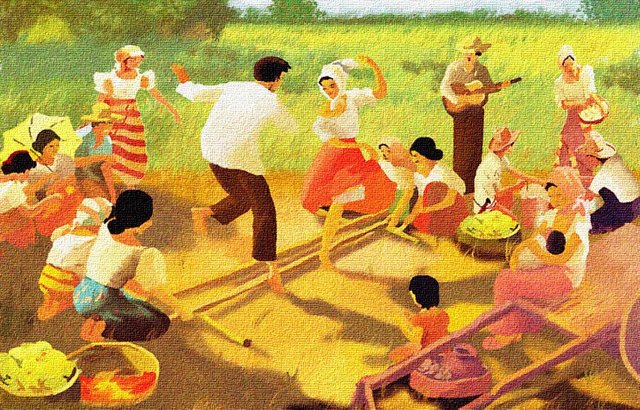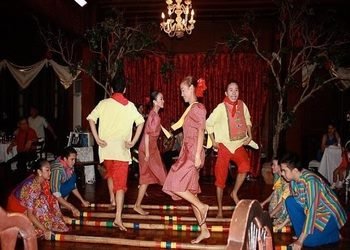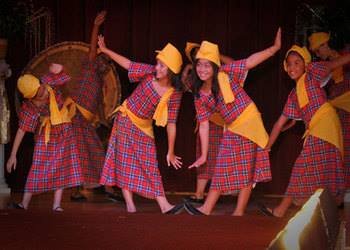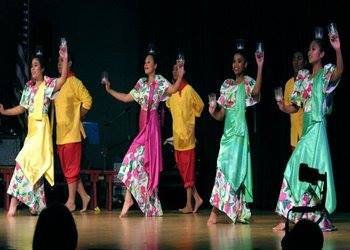Top 5 Folk Dances in the Philippines

Philippines is one of the Asian countries with rich and very diversified cultures. This is probably because we were colonized by different powerful countries from different sides of the world. Filipinos are very skilled in adapting interesting cultures and traditions from neighboring and western countries. And even before, we are already enjoying and celebrating the cultures of our natives.
When we talk about Philippine cultures, folk dance is one of the top most things that come into our mind. Filipinos have a wide variety of folk dances that many of us still practice until now. Here are the top 5 most popular folk dances in the Philippines:

Tinikling
It is very seldom that you’ll encounter a Filipino who doesn’t know or doesn’t have any idea about this bamboo dance. This traditional Philippine dance has been derived during the Spanish colonial period. Tinikling is composed of two people who beat, tap and slide the two bamboo poles on the ground according to rhythm or beat. This is done while one or more dancers step over or in between the bamboo poles. Although, there are already some improvised movements and music applied, this is traditionally performed with rondalla music or the rhythm played using stringed instruments.

Cariñosa
Cariñosa is one of the most popular folk dances in the Philippines. This dance also originates from Hispanic era. The word “cariñosa” is a Spanish term which means ‘the affectionate one’. So, this means that this is a dance portraying love and courtship in a romantic view.
Dancers use fan and handkerchief as props in which a male and female dancers show how courtship is done and how to win someone you love in a romantic way. Choreography is patterned in a traditional Filipino way of showing affection which does not elicit vulgar actions but of prim and proper or traditional way.

Itik-itik
Another traditional or cultural dance in the Philippines is Itik-itik. This popular dance is said to have originated from Visayan Islands. “Itik” means duck in English. The movements of this cultural dance includes walk with little choppy steps that imitates how Itik moves.
This folk dance is mostly performed in schools and government agencies especially during National celebrations.

Sayaw sa Bangko
Sayaw sa Bangko or “Dance on tap of a bench” originates from Pangasinan and usually performed by a couple or dance partners on a narrow bench. The choreography includes inching and hopping from one end to another. This must be done in a synchronize way to avoid one from falling on a bench first and get off balance. There are improvised choreographies applied in the modern sayaw sa bangko to make this native dance more appealing and new.

Pandango sa Ilaw
Pandango sa Ilaw is one of the most popular folk dances in the Philippines. This is quite challenging as dancers hold glasses with candles or lamps. As they dances, they must see to it that the fire/light will not be blown away with air or the glasses remain in balance to avoid being accidentally burned when the light falls off. The dancers must dance gracefully and carefully to make sure that they are in control with the “ilaw” or light. Some choreography involves partners alternating in holding the lights when one gets tired. There are many local versions of this folk dance as Filipinos never gets tired of imitating and making better versions of one dance step to another.
These are just some of the popular traditional dances in the Philippines. Aside from these highlighted above, there are still more folk dances that are still being performed in the present. Some of these are Binasuan, Maglalatik, Kuratsa, Polkabal, Surtido, Singkil and many more. These cultural dances are commonly performed by the youth especially students and professional dancers in various festivals and national celebrations.
Since festivals vary from different regions and provinces, you’ll see different versions of these dances although the props and music are mostly similar or played in the same rhythm. If you’ll study the country’s culture, you will discover how prosperous and diversified it is. The country is not only abundant with natural resources but also with traditions and beliefs. And even if these cultures change in time, the fact still remains that Filipinos can easily adapt various traditions that could help improve the country’s customary way of living.
Nice, so I think those dancing are example of acculturation form many western and eastern culture. :)
Downvoting a post can decrease pending rewards and make it less visible. Common reasons:
Submit
Could be, but based on history it was introduced by early settlers of the country. Others are influenced of the Spanish colonization.
Downvoting a post can decrease pending rewards and make it less visible. Common reasons:
Submit
nice one kabayan :)
Downvoting a post can decrease pending rewards and make it less visible. Common reasons:
Submit
Thanks kabayan, lots people are forgetting this tradition especially the new generations.
Downvoting a post can decrease pending rewards and make it less visible. Common reasons:
Submit
Keep on sailing in the Ocean Planet of Steem, my friend.
Downvoting a post can decrease pending rewards and make it less visible. Common reasons:
Submit
Yeah right, hope that by continuously swimming we can catch them. But I think we need a boat before we can catch the big one. :)
Downvoting a post can decrease pending rewards and make it less visible. Common reasons:
Submit